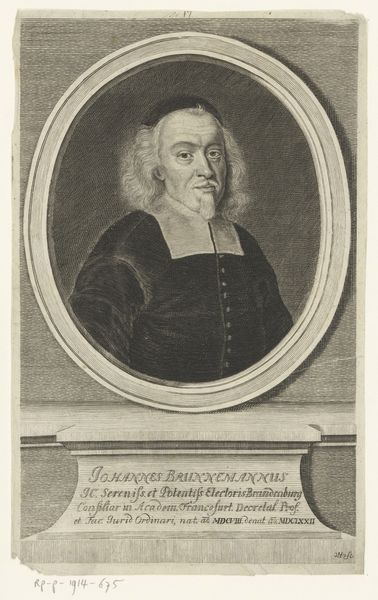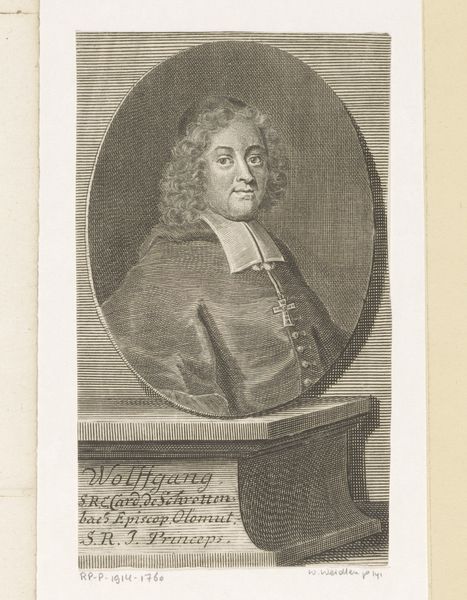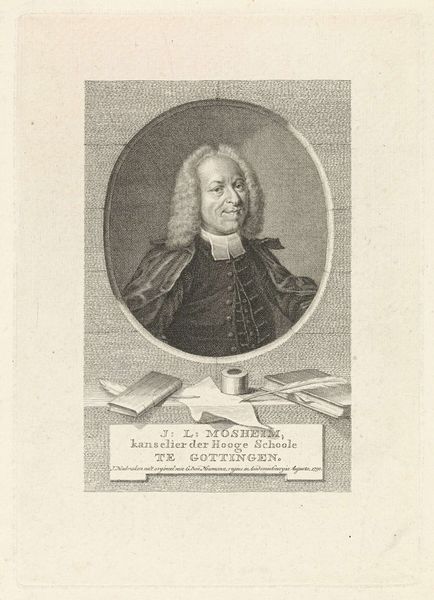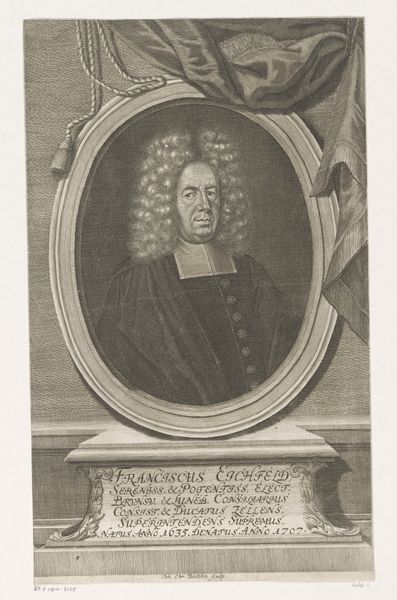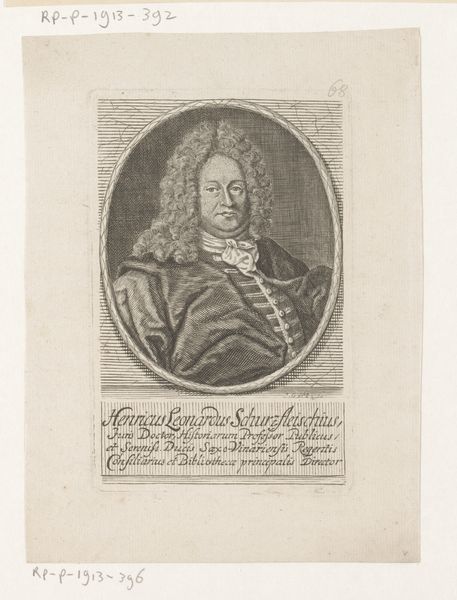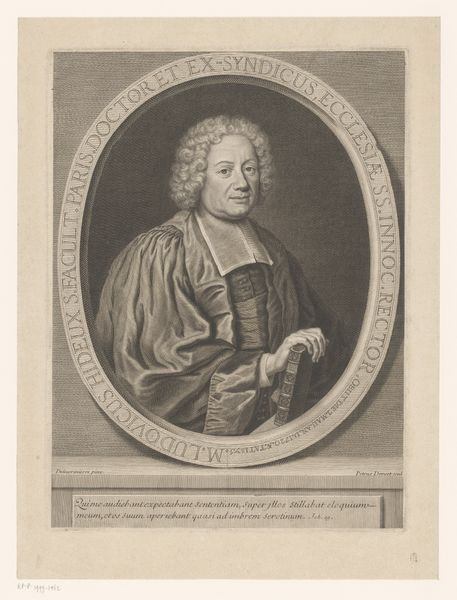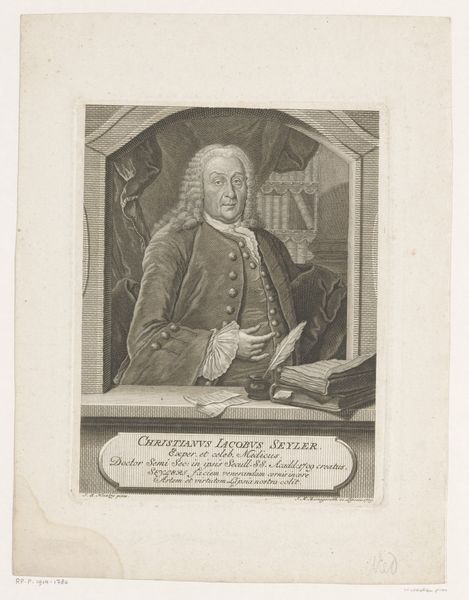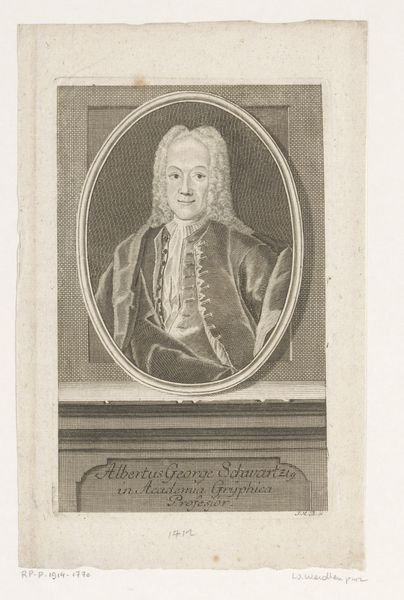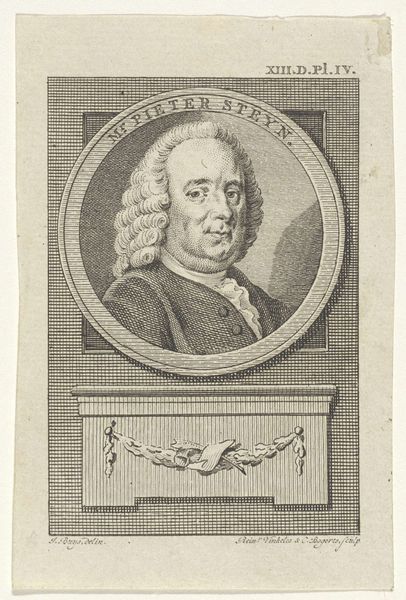
intaglio, engraving
#
portrait
#
baroque
#
intaglio
#
engraving
Dimensions: height 151 mm, width 87 mm
Copyright: Rijks Museum: Open Domain
Editor: This is a portrait of François-Armand de Lorraine-Armagnac, made in 1730 by Martin Bernigeroth. It's an intaglio, an engraving on, I think, metal. The subject looks rather severe, and I'm curious to know what strikes you most when you look at it? Curator: Primarily, I observe the stark contrasts achieved solely through line and tone. Note how Bernigeroth constructs form. Observe, in particular, the play of light across the face and the meticulous rendering of the sitter's wig. The geometric structure imposed by the oval frame against the rectangular field provides a structured setting, almost cage-like. Editor: Cage-like? Curator: Note the sharp angles of the containing rectangle; now trace the elegant curve of the oval within it. The subject, positioned inside the oval, appears confined yet also elevated. This dichotomy is at the heart of the engraving’s visual tension. Editor: So, the meaning is created by this tension in its structure? I see what you mean about confined yet elevated. It's really interesting to consider how the structure of the engraving communicates meaning. Curator: Precisely. The work also engages in a discourse about representation itself. The medium, intaglio, inherently lends itself to detailed replication, inviting viewers to analyze the very process of creating likeness through such technical means. And consider what seems like the casual placement of text – a floating island providing stability as the nameplate for the sitter. Editor: I see the structural choices as key to its impact. Now, when I look at this artwork, my understanding is entirely transformed, shifting beyond the historical likeness it provides. Thank you. Curator: A fruitful formal exercise, wouldn't you agree? Examining the work’s material structure offers access to the historical context and its intended significance.
Comments
No comments
Be the first to comment and join the conversation on the ultimate creative platform.
